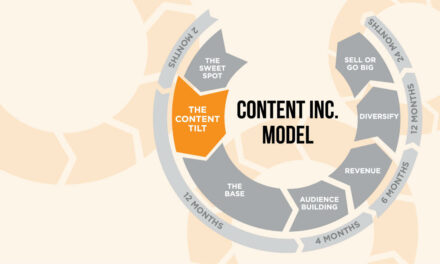What makes the world go round today? Some say money. Others say love. But many would point to social media. And who would argue, considering that we increasingly rely on social media platforms to communicate, share content, get news and information, watch video, make purchases, and more?
We’ve reached a point at which it’s become the go-to tool of choice, the indispensable Swiss army knife of tech utilities that can replace newspapers, telephones, TVs, emails, and even human interactions. And therein lies great opportunities for—and the need for greater responsibility from—marketers and brands that seek to wield this formidable weapon.
Consider that, today, more than 70% of Americans use social media—up from only 5% tallied in 2005, according to the Pew Research Center. A handful of key players in the space continue to rule. Social Media Examiner’s “2017 Social Media Marketing Industry Report” revealed that the top platforms used by marketers are Facebook (94%), Twitter (68%), LinkedIn (56%), Instagram (54%), YouTube (45%), Pinterest (30%), and Snapchat (7%).
“Social media is still viral,” says Franco Aquino, co-founder of REN Marketing. “A few years ago, it was more about engaging with family, friends, and influencers. Now it’s all about content—mainly video. You have Twitter showing livestreams of sports, Facebook promoting regularly scheduled shows on Watch, and Instagram pushing selective content that keeps the user on their feed.”
Nevertheless, effective social marketing is harder than you think, says Matt See, SVP of social and digital innovation for FleishmanHillard. “Many think that utilizing it as a marketing tool is easy—it’s not. It’s a science that now involves statistics, data analysis, budgeting, creative writing, creative content, and more,” says See. “Because of that, many businesses struggle in how to connect with their users.”
The Social Media Year in Review
Social media dominated major headlines in 2017, underscoring its pervasiveness as well as its potential for controversy. The current president became a Twitter sensation, for better or worse. The proliferation of fake news across social media and the revelation that the Russians manipulated Facebook to swing our election sowed mistrust among Americans. Major ad agencies and brands began boycotting Google in response to offensive video content.
DAU (daily active users) became a more important metric. The platforms introduced or perfected innovative new features such as Facebook’s Watch, LinkedIn’s Video, and Instagram’s Stories (which overtook Snapchat’s entire userbase). Chatbots and messaging apps became more valued customer service tools for companies and consumers alike. And AOL Instant Messenger bit the dust.
But the biggest social stories over the past year have been dominated by Facebook, Andrew Selepak contends, director of the graduate program in social media at the University of Florida. “In its quest for money and profits, Facebook allowed Russian operatives to spread fake news and dissent into our election. Now, they’ve begun to face a backlash and an outcry in the media for Congress to act on the power of Facebook over news consumption and advertising,” says Selepak. “Also, after unsuccessfully attempting to purchase Snapchat, the company turned its attention to destroying their rival by introducing similar features on Instagram to a wider userbase.”
2017 was also the year when “social” became a largely meaningless signifier when describing media, according to Kyle Bunch, managing director of social at R/GA. “The central role that these platforms play in our lives has ensured that all media has to be inherently social. Everything we do in a post-social world has to inspire an action, be it a conversation or click, or it’s likely to fail,” Bunch says.
Other worries that festered in 2017 included user resentment and skepticism. “Without core values, privacy, and true transparency, these platforms will burn out their users. Platforms that do not provide more power back to the people will experience a strong push back,” says Janice Taylor, CEO of Mazu. She and others fear that social media is quickly reaching a breaking point. “People are starting to ask themselves if this is actually good for us,” Taylor notes. “Are we more connected or further divided?”
A Look Ahead at Social Media
Going forward, social professionals must be increasingly sensitive to the fact that more users are becoming suspicious of the product. “There’s a growing awareness that social media is not free. As users become more literate to the terms of service for social media and how brands, the government, and employers are using this information, social media will face a backlash,” says Selepak.
To stay pertinent on social media, brands must carefully and responsibly collect data on their audience and insights on customer behavior, many believe. “The biggest challenge is understanding your audience, interpreting data, and then developing actionable strategies that can lead to meaningful content and experiences that drive business results,” says Bunch.
Another concern that needs to be addressed moving ahead is showing return on your social marketing investment, which requires more than just creativity and content to succeed. “Marketers need to track if any potential customers who engage with their brand also convert into leads and, at a later stage, into customers,” Yuval Ben-Itzhak, CEO of Socialbakers, says.
Additionally, more real-time personalization is needed to prevent users from being turned off by unimportant or annoying content on social. “Brands need to adopt a personalized approach to how they target consumers within messenger applications, keeping the interaction very natural and non-invasive if they want to be relevant to their audience,” adds Ben-Itzhak.
See agrees. “Look for more personalized micro-?experiences in 2018. Gen Z has an attention span of about 4 seconds—nearly half that of Millennials. So brands will have to create micro-videos to grab attention and compete for consideration.”
Aquino predicts a stronger user preference for video on social media in the coming year, as well as more features that will allow consumers to edit videos within apps before they’re shared. Aquino adds, “We’ll probably see augmented reality become more mainstream as well, helped by Apple’s ARKit framework.”







